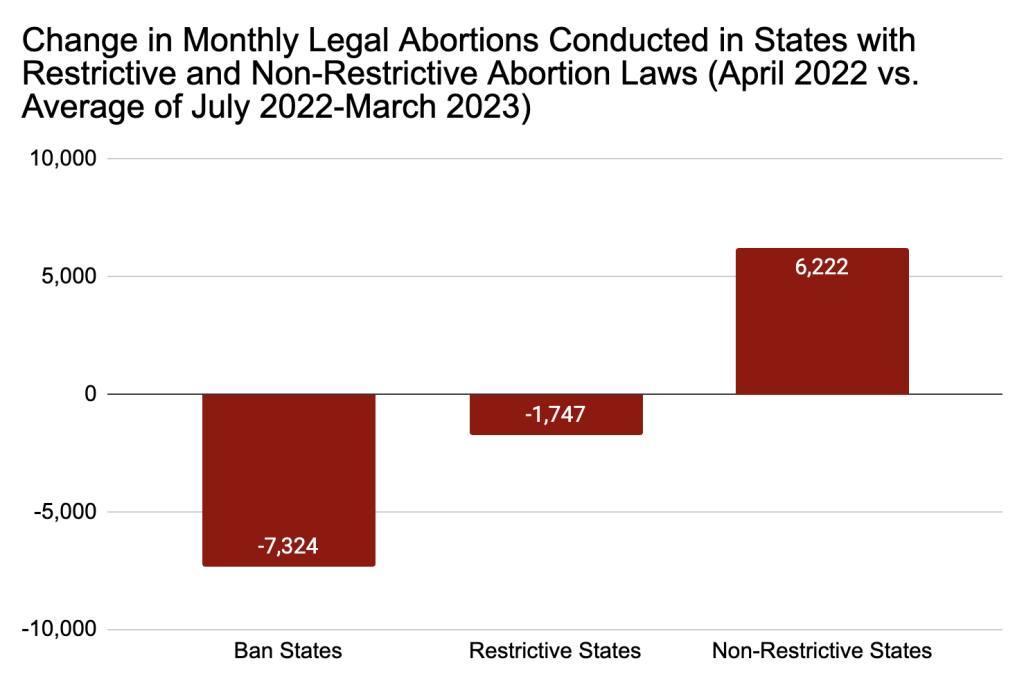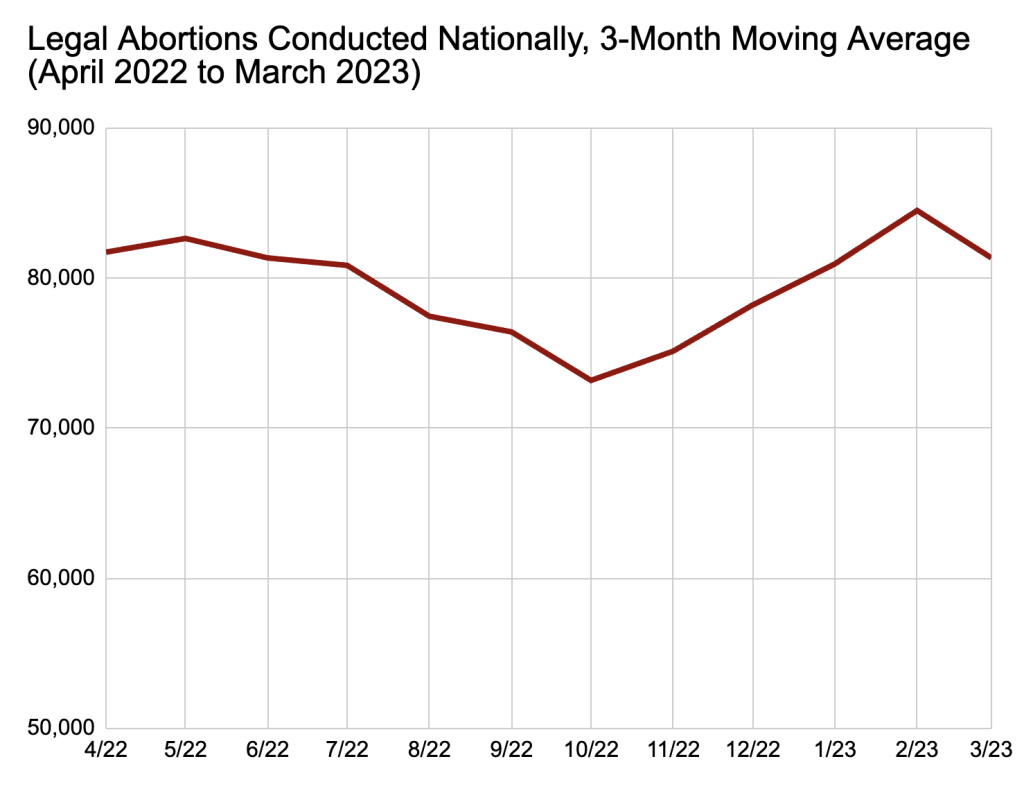I’ve written twice before on the question of how much the Dobbs decision, which gave states the power to tighten abortion laws, has actually reduced abortion in the US (I, II). The upshot of those pieces was that it has not reduced abortion very much (~2.5%) because the vast majority of the US population lives in states that have not restricted abortions and most individuals who live in restrictive states can travel to non-restrictive states or self-administer abortion through medication that is not that hard to get through the mail.
Today we got the latest dump of data on the question from the Society of Family Planning and the numbers continue to back up the claim that Dobbs has had a very small impact on aggregate abortions and that what impact it did have is likely waning over time as individuals affected by new restrictions become more knowledgeable about how to receive an abortion in the new legal environment.
In the pre-Dobbs month of April 2022, there were 81,730 legal abortions conducted throughout the US. On the average post-Dobbs month between July 2022 and March 2023, there were 79,031 legal abortions conducted throughout the US. This is a decline of 3.5 percent.
A state-by-state breakdown shows that legal abortions fell in restrictive states but that this decline was mostly offset by a corresponding increase in abortion in non-restrictive states. This indicates that most people in restrictive states are traveling to non-restrictive states to get abortions.

The SFP count only includes legal abortions conducted by abortion providers. This means that it misses all of the abortions conducted through less formal means, such as through abortion pills received through the mail or purchased across the border. These other abortions are necessarily difficult to track, but there is plenty of evidence that they have increased substantially after Dobbs. When those abortions are accounted for, the total decline in abortions is certainly below 3.5 percent and is probably around 1 or 2 percent.
The SFP data also shows that, even when looking only at legal abortions conducted by abortion providers, the post-Dobbs decline in abortion appears to be waning. Indeed, in the last few months of data, national abortions have returned to the levels that they were prior to Dobbs.

This is consistent with the idea that, over time, information about what to do if you want an abortion in a restrictive state will become more widespread, further blunting the effectiveness of the restrictions.